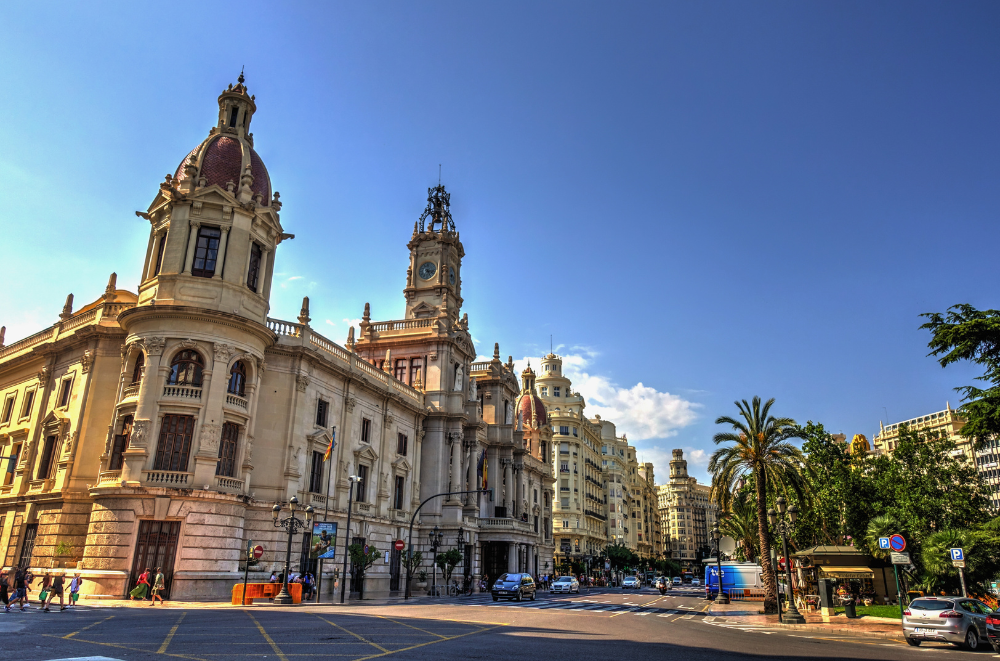Within the ancient walls of Ávila, Spain, stands a magnificent testament to medieval architecture and faith – the Ávila Cathedral. This imposing structure, officially known as the Cathedral of the Savior, is not just a place of worship but a fortress-like edifice that has stood guard over the city for centuries.
I arrived at Ávila Cathedral on a clear morning daytrip from Madrid, ready to explore this historic landmark. As I approached, the huge size of the building was very impressive. It’s not just a church, but also part of the city’s defensive walls, which makes it pretty unique.
Walking around the cathedral, I kept noticing interesting details. There are sculptures on the north entrance that show Bible stories. It’s amazing how much detail the medieval craftsmen managed to carve into the stone. The mix of Romanesque and Gothic styles in the architecture is also really noticeable.
It’s pretty cool to think about how old this place is and all the history it’s seen. The cathedral has been here for centuries, through all sorts of important events in Spanish history. As I was looking at it, I tried to imagine what it must have been like when it was first built, and how it’s changed over time.

Overall, Ávila Cathedral is a must-see if you’re in the Madrid area. It’s not just a beautiful building, but also a fascinating glance into Spain’s rich history. But before you go, there are a few things you should know to make the most of your visit. Let’s dive into some practical information and insider tips to help you plan your trip to this remarkable landmark.
A Brief History of Ávila Cathedral
The construction of Ávila Cathedral began in the 12th century, making it one of the oldest Gothic cathedrals in Spain. Built on the site of a former church, the cathedral’s design blends Romanesque and Gothic styles, reflecting the architectural transitions of its time.
Interesting Historical Facts:
- The cathedral was designed to be part of the city’s defensive walls, hence its fortress-like appearance.
- It took over 200 years to complete the main structure.
- The cathedral has withstood numerous sieges and conflicts throughout its history.
Exterior: A Fortress of Faith
As you approach Ávila Cathedral, its imposing exterior immediately catches your eye. The cathedral’s apse, known as the “cimorro,” is seamlessly integrated into the city walls, highlighting its dual purpose as both a place of worship and a defensive structure. Massive granite stones form the foundation, while the fortified apse with its crenellations and watchtower stands guard.

Interior: A Treasure Trove of Art and Architecture
Step inside Ávila Cathedral, and you’ll be transported to a world of solemn beauty and artistic mastery. The interior is a harmonious blend of various architectural styles, housing priceless artworks and relics.

Notable Interior Elements:
- The magnificent high altar, featuring intricate alabaster work
- The ornate choir stalls, carved with exquisite detail
- The 15th-century rose window, casting colorful light into the nave
- The museum, home to precious religious artifacts and artworks
5 Expert Tips for Exploring Ávila Cathedral Like a Local
1. Time Your Visit for the Best Experience
Arriving early in the morning not only helps you beat the crowds but also offers the best lighting for photography. The cathedral opens its doors at 10 AM, and being there right when it opens allows you to explore the interiors in relative peace. If you’re looking for a unique experience, consider visiting during the Semana Santa (Holy Week) celebrations, when the cathedral becomes the focal point of religious processions.

2. Don’t Miss the Hidden Gems
While the imposing exterior is breathtaking, the cathedral’s true treasures lie within. Make sure to visit the Cathedral Museum, which houses an impressive collection of religious artifacts and artwork. Pay special attention to the 15th-century rose window and the intricately carved choir stalls. For a truly spectacular view, climb to the top of the bell tower – it’s a bit of a workout, but the panoramic views of Ávila are well worth the effort.

3. Explore the Fortress Features
Ávila Cathedral’s unique design as part of the city’s defensive walls sets it apart from other Spanish cathedrals. Take time to explore the fortified apse, known as the “cimorro.” This architectural feature shows the cathedral’s dual role as a place of worship and defense. Walk along the walls adjacent to the cathedral for a different perspective and to fully appreciate its integration into Ávila’s defensive system.

4. Join a Guided Tour for In-Depth Insights
While exploring on your own is rewarding, joining a guided tour can provide invaluable insights into the cathedral’s history and architecture. Many tours are available in multiple languages and offer access to areas that might be restricted to general visitors. The guides often share fascinating stories and legends about the cathedral that you won’t find in guidebooks.
5. Combine Your Visit with Ávila’s Other Attractions
Ávila Cathedral is just one jewel in this UNESCO World Heritage city’s crown. Plan your visit to include other nearby attractions like the Basilica de San Vicente and the Convent of Saint Teresa. The Plaza del Mercado Chico, just a short walk from the cathedral, is a perfect spot to relax and enjoy local cuisine after your visit. This way, you’ll get a comprehensive experience of Ávila’s rich cultural heritage.

By following these insider tips, you’ll ensure that your visit to Ávila Cathedral is not just a tick off your travel list, but a truly memorable experience. From capturing the perfect photo to uncovering hidden historical gems, these insights will help you appreciate the full majesty of this Spanish architectural wonder. Remember to respect the cathedral’s sanctity as an active place of worship, and you’re set for an unforgettable journey through centuries of faith, art, and history.
Conclusion: A Must-Visit Landmark in Spain
Ávila Cathedral stands as a testament to Spain’s rich history and architectural prowess. Whether you’re a history enthusiast, an architecture lover, or a spiritual seeker, this majestic cathedral offers a profound and unforgettable experience. So, if you’re visiting Madrid, don’t miss this awesome and history-inspired day trip!
FAQ About Ávila Cathedral
Visitors to Ávila Cathedral often have many questions about this historic landmark. Below, I’ve compiled and answered some of the most common queries to help you plan your visit and make the most of your experience at this magnificent Spanish cathedral.
What are the opening hours for Ávila Cathedral?
Ávila Cathedral is typically open to visitors from 10 AM to 7 PM Monday through Saturday, and from 12 PM to 7 PM on Sundays and holidays. However, it’s always best to check the official website or contact the cathedral directly for the most up-to-date information, as hours may vary during special events or religious holidays.
How much does it cost to visit Ávila Cathedral?
The general admission fee for Ávila Cathedral is around 6 euros for adults. There are often discounted rates available for seniors, students, and children. Some areas of the cathedral, such as the bell tower, may require an additional fee. It’s worth checking if there are any combined tickets available that include other attractions in Ávila for better value.
Is Ávila Cathedral suitable for children to visit?
Yes, Ávila Cathedral can be an engaging experience for children, especially those interested in history or architecture. The imposing structure, intricate details, and the possibility of climbing the bell tower can captivate young minds. However, parents should be mindful that it is a place of worship and ensure children behave respectfully.
Can I take photographs inside Ávila Cathedral?
Photography is generally allowed inside Ávila Cathedral for personal use, but flash photography is typically prohibited to protect the artworks and maintain a respectful atmosphere. Always check for any signs or ask a staff member about specific rules, as some areas or exhibits may have restrictions.
How long does it take to visit Ávila Cathedral?
A typical visit to Ávila Cathedral can take anywhere from 1 to 2 hours, depending on your level of interest and whether you join a guided tour. If you plan to explore the cathedral museum and climb the bell tower, you might want to allow for additional time.
Is Ávila Cathedral accessible for visitors with mobility issues?
While efforts have been made to improve accessibility, Ávila Cathedral, like many historic buildings, may present challenges for visitors with mobility issues. The main floor of the cathedral is generally accessible, but areas like the bell tower may not be. It’s best to contact the cathedral in advance to inquire about specific accommodations or assistance.
What is the best time of year to visit Ávila Cathedral?
Ávila Cathedral can be visited year-round, but the experience can vary with the seasons. Spring and fall often offer pleasant weather for exploring both the cathedral and the surrounding city. Summer can be quite hot, while winter might be chilly but less crowded. Consider visiting during local festivals for a unique cultural experience.
Can I attend a mass at Ávila Cathedral?
Yes, Ávila Cathedral is an active place of worship, and visitors are welcome to attend mass. Mass times are typically posted at the cathedral entrance or on their website. Attending a service can provide a deeply spiritual dimension to your visit, allowing you to experience the cathedral’s living tradition.
What are some nearby attractions to Ávila Cathedral?
After visiting Ávila Cathedral, you can explore other notable attractions in the city, such as the medieval city walls, the Basilica of San Vicente, and the Convent of Saint Teresa. The nearby Plaza del Mercado Chico is a great place to relax and enjoy local cuisine. All of these are within walking distance of the cathedral.






